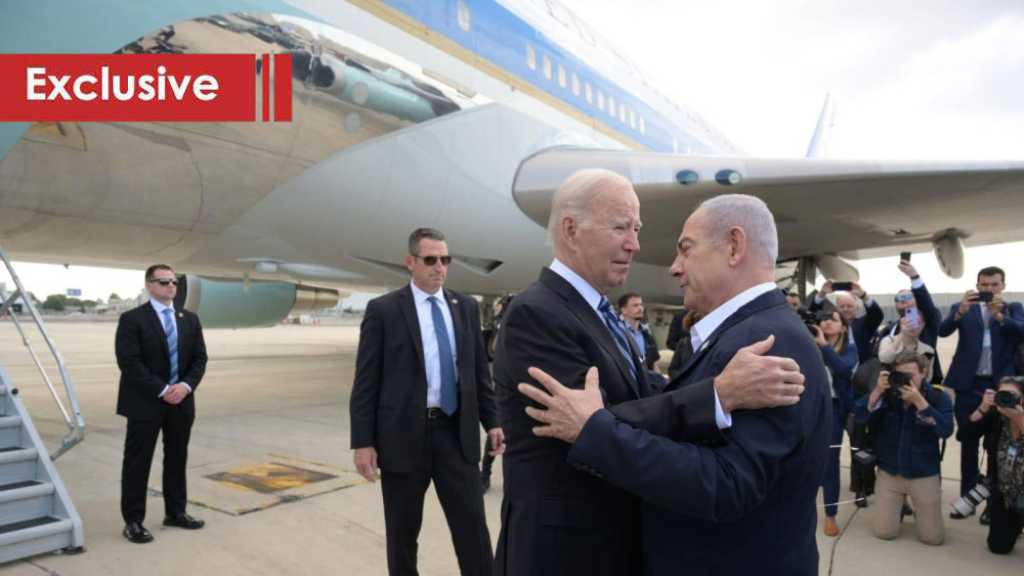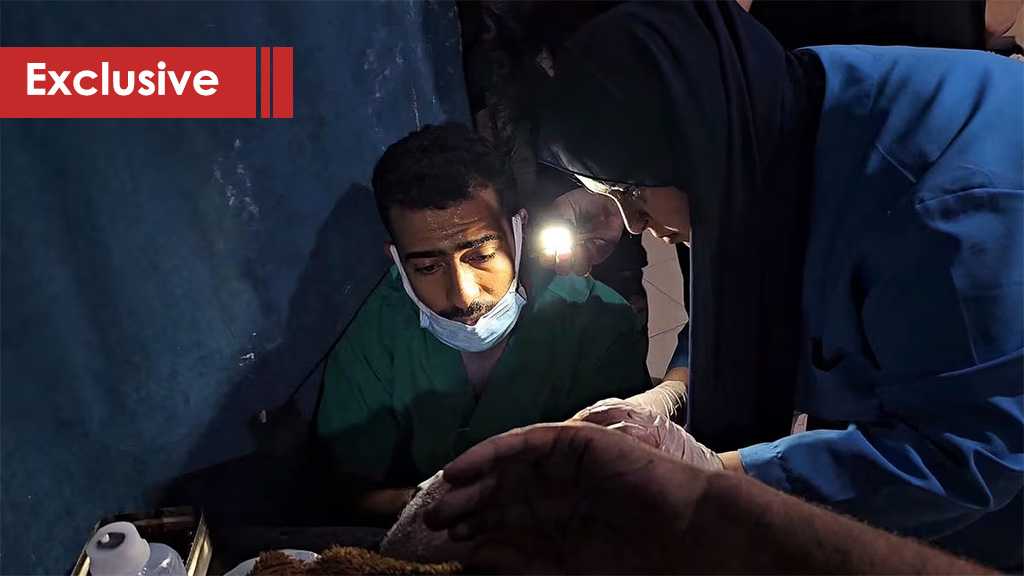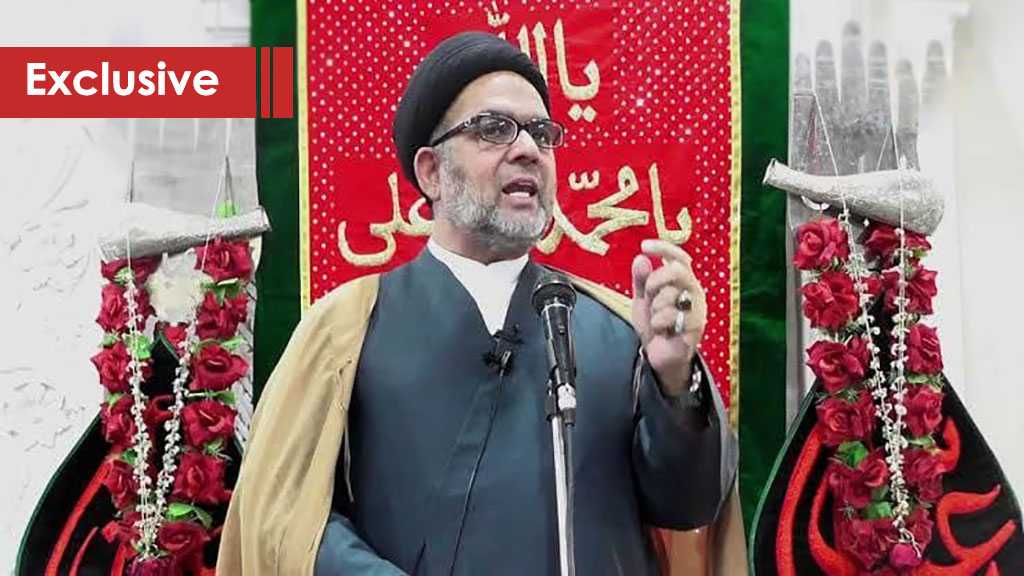
Sheikh Ragheb, Sayyed Abbas, Hajj Imad: The Three Founders of the Resistance

Ali Reslan
The path of resistance did not cease its development and progress ever since its establishment back in 1982, and witnessed significant checkpoints built by the Martyr Leaders.
Every leader had his distinctive mark that eternalized the resistance's legend, rising from the phase of "Stance is a weapon" to "Maintenance of resistance" to the era of "The time of defeats has passed."
In the southern village of Jibchit, the story of the resistance had begun, amidst the era of Arab submission and the dominance of mentalities like "We are not strong enough to fight "Israel"" or "The weak cannot resist the mighty", the village's son Sheikh Ragheb Hareb returned from the Religious School (Hawza) in Iran, invigorated by his great faith in Allah and the power of speech.
 On his way to Jibchit, the Sheikh did not bother stopping at "Israeli" checkpoints, rebelling the reality of weakness and submission the community had suffered at that time. Sheikh Ragheb never made truce nor compromised; He refused to host "Israeli" soldiers in his home, refused to shake an "Israeli" General's hand, and turned his back on "Israelis" when he would head to the mosque. His actions reiterated that confronting the enemy is a duty, and smiling in the occupier's face is a taboo.
On his way to Jibchit, the Sheikh did not bother stopping at "Israeli" checkpoints, rebelling the reality of weakness and submission the community had suffered at that time. Sheikh Ragheb never made truce nor compromised; He refused to host "Israeli" soldiers in his home, refused to shake an "Israeli" General's hand, and turned his back on "Israelis" when he would head to the mosque. His actions reiterated that confronting the enemy is a duty, and smiling in the occupier's face is a taboo.
Every nook and cranny in Jibchit spoke of the Sheikh's impact, soon spreading to the rest of the South. His Eminence raised the spirit of revolution in Southerners, beginning with the construction of Jibchit's mosque in the "Lira Project" (Pound Project, where the Sheikh assigned people to raise funds from the village's residents to build the mosque).
Moreover, Sheikh Ragheb practiced resistance before preaching, and with his Southern accent, he captivated everyone's hearts. From the mosque, he worked on the people's will in resistance. People who knew Sheikh Ragheb would cite him as saying, ""Israel's" retreat from Lebanon is inevitable, but let's work on evicting it from Palestine."
The Sheikh was able to found a resisting community, and built the cornerstone of an atmosphere that embraced the resistance and refused occupation, moving people to reject the "Israeli" occupation by their stance and to spread popular movements against the occupation with sticks and stones. The Nabatieh uprising was the most distinctive popular movement in face of Zionist soldiers; elders, youth, children, men, and women all became resisters.
Moving Southerners to resist did not come to the liking of the "Israeli" enemy, which drove them to think of ways to get rid of the culprit. As a result, Sheikh Ragheb Hareb was apprehended, but then released under popular pressure.
The Sheikh, however, did not cease his movement, so "Israelis" set him an ambush on Thursday, February 16, 1984, which led to his assassination.
The "Israeli" enemy thought that assassinating Sheikh Ragheb Hareb would relieve it, but "a martyr's blood that fell in the name of Allah grew to awaken all nations' peoples."
 His Eminence's martyrdom caused a revolution to erupt, besieging the enemy, and forcing it to retreat to the hills and to fortify itself.
His Eminence's martyrdom caused a revolution to erupt, besieging the enemy, and forcing it to retreat to the hills and to fortify itself.
Furthermore, Sayyed Abbas Moussawi, from the Bekaa village of Nabi Chit, commenced the formation of the organized resistance, completing the popular uprising started by Martyr Sheikh Ragheb.
Sayyed Abbas spent years in the Lebanese South, moving between resistance's sites. He was a father, brother, and leader. The resistance's operations targeted enemy sites and strongholds, which eventually led the "Israeli" enemy to retreat from many areas of the occupied South in 1985, residing in what was called the borderline zone.
Nevertheless, Sayyed Abbas never ceased; he followed up the resistance's mounting in the political and security phase where other domestic parties were collapsing. He persevered in preparing and executing resistance formations, which led to the development of resistance operations' quality. Such development included breaching enemy sites through special units preceded by surveillance teams that located and locked targets, followed up by engineering and support teams. Likewise, this phase allowed the participation of war media in the battle.
This Sayyed embedded the phrase ""Israel" has collapsed" in the minds of the resistance's popular base, and raised the slogan "We are at your service" to be close to this base.
The foremost target of the "Israeli" enemy then was to take down this leader who gathered the people to support the resistance, leading to his martyrdom on the day Sheikh Ragheb Hareb was assassinated in 1992.
"Kill us, for our people will become more and more aware." A saying stated by the martyred Sayyed, and indeed the level of awareness and the resistance's potential enlarged. The resistance, for the first time in its history, had launched Katyusha rocket launchers on the "Israeli" Kiryat Shemona, Metula, and Misgav Am settlements.
 Likewise, Hajj Imad had contributed to this great accomplishment that carried Sayyed Abbas's will at heart: "My main will is to maintain the resistance". He followed up the resistance's path as to the supervision and plotting of the self-sacrifice martyr Ahmad Qassir in 1982, and boosted the engineering teams in the resistance that targeted enemy convoys in the core of the occupied area through bombs. These bombs startled the enemy to the extent that it negotiated ways to stop this weaponry that destroyed its soldiers and vehicles and even targeted high ranked leaders like Erez Gerstein, Akel Hashem and others.
Likewise, Hajj Imad had contributed to this great accomplishment that carried Sayyed Abbas's will at heart: "My main will is to maintain the resistance". He followed up the resistance's path as to the supervision and plotting of the self-sacrifice martyr Ahmad Qassir in 1982, and boosted the engineering teams in the resistance that targeted enemy convoys in the core of the occupied area through bombs. These bombs startled the enemy to the extent that it negotiated ways to stop this weaponry that destroyed its soldiers and vehicles and even targeted high ranked leaders like Erez Gerstein, Akel Hashem and others.
The leader Imad Mugniyah focused on missile arsenal, particularly Grad missiles, where the resistance witnessed qualitative enhancements during the 1993 "Israeli" aggression then the 1996 aggression. The Leader was dedicated to the balance of "Israeli" targeting of civilians and the resistance's targeting of settlements, until this balance came into effect. In each aggression, "Israelis" would seek ways to curb the effect of missiles on their front, and the resistance would seek to increase its range and cover broader areas in Occupied Palestine.
Meanwhile, breaching operations continued, and Hajj Imad included military tactics to become more systemized and attain the set goal. By this, the Mujahideen were able to reach the enemy's backfield, secured by their spies in the front area.
During eight years after Sayyed Abbas's martyrdom, Hajj Imad set a tactical plan to expel the occupation humiliated from the Southern lands. The plan was soon achieved when the "Israeli" enemy retreated from Southern lands in the year 2000, and Hajj Imad then placed strategies to protect Lebanon.
The strategic leader could not be calm after the first victory of the "Israeli" retreat, but rather worked constantly with the Mujahideen to organize and boost fronts for a greater confrontation. He taunted the enemy with surprises; The "Mersad 1" plane sored over occupied Palestine, petrifying Zionist leaders, militaries, and settlers.
However, this plane was not the only trick up Hajj Imad's sleeves; rockets reached "beyond Haifa", Kornet anti-tank missiles destroyed "Israeli" Merkavas, and land-to-sea missiles destroyed the "Israeli" Sa'ar 5 ship, all during the "Israeli" aggression on Lebanon in 2006. Yet, the resistance had not revealed all its cards and boosted its human and logistic potential after the aggression, preparing for the inevitable upcoming battle.
In 2008, the Leader Imad Mugniyah was assassinated. The Zionist entity had hailed and joyed over what it described as an accomplishment that could disrupt the resistance, but the Martyred Leader "left tens of thousands of trained Mujahideen ready for any confrontation" (as quoted by Hizbullah's current Secretary General His Eminence Sayyed Hassan Nasrallah in reference to Hajj Imad Mugniyah's martyrdom) and left plots that would allow the resistance to reach the core of Palestine; al-Aqsa mosque.
The enemy now carefully calculates its every move considering that the resistance's arsenal has reached over 50,000 missiles, all able to cover the area "from Kiryat Shemona to Eilat" (as quoted by His Eminence Sayyed Hassan Nasrallah).
This is the path of the great resistance. Each of the three Martyr Leaders completed the other in his own role; one leader awakened the popular consciousness, another followed up the popular awakening by Jihadist movements, and a Jihadist leader plotted, supervised, trained, and achieved victorious glories.
Source: al-Ahed News, translated and edited by moqawama.org



